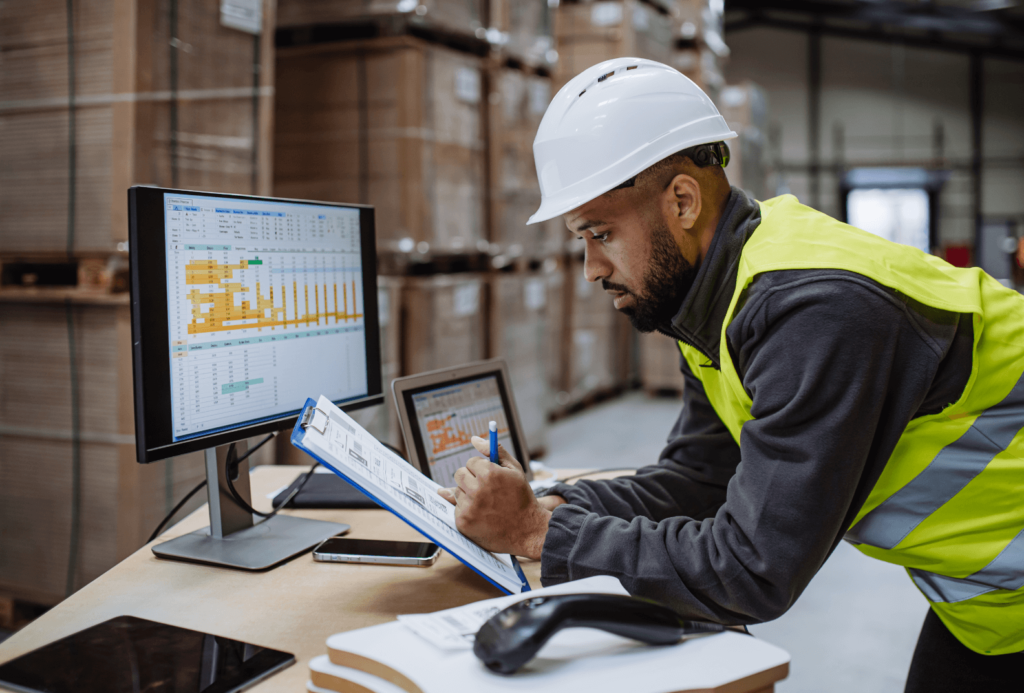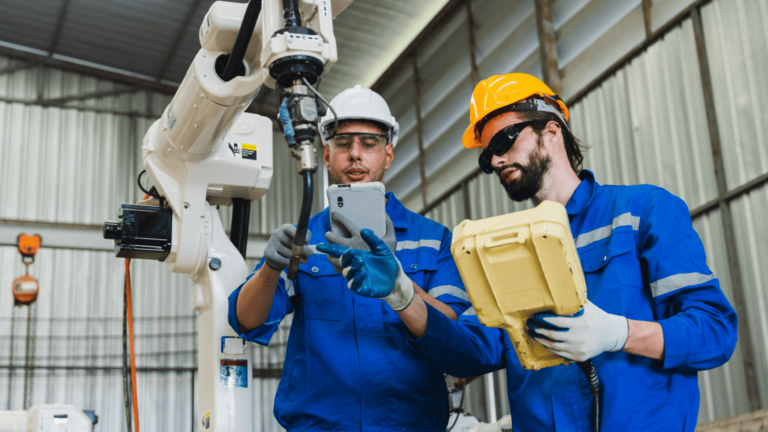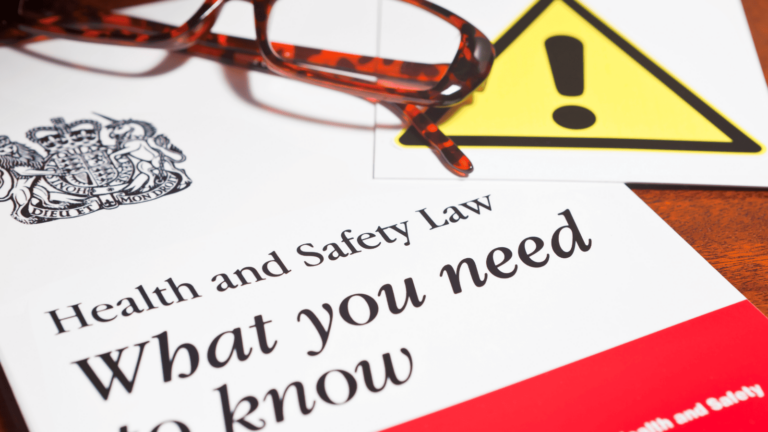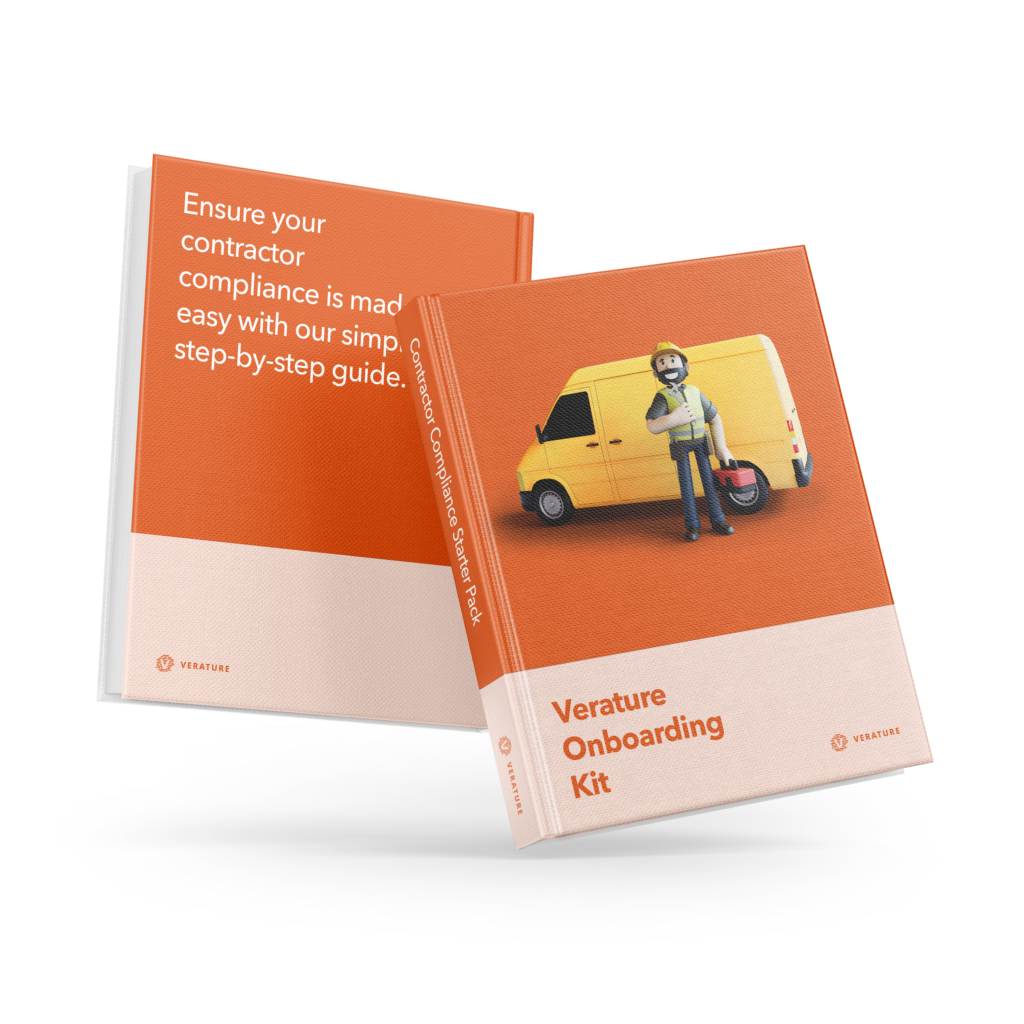- Why Verature?Find out why Verature is the best system for continuous contractor compliance.
- Arrive, Work & Stay Safe
- Removes Paper & Spreadsheets
- Tracks Key Contractors
- Instant 360 Visibility
- Contractor Management Dashboards
- Why Contractor Management Software
- Our Customer Reviews
- Pricing
We don’t hide behind fancy sales teams before we tell you, our prices.- Clients
See who we are working with and what they have to say about Verature.- Resources
Check out our blog, useful guides, whitepapers and product videos.- Prequalification and Induction Guide
- Contractor Compliance Guide
- Mini-Audit your Permit to Work System
- Health and Safety Audit Checklist
- Resource Library
- Blog
Book a demo
The Role of Technology in Improving Risk Assessment and Safety Management
In today’s rapidly evolving technology-driven landscape, the importance of risk assessment and safety management cannot be overstated. Organisations across various sectors are increasingly recognising that effective risk management is not merely a regulatory obligation but a vital component of operational excellence and employee wellbeing. As the nature of work becomes more complex, with new technologies and processes emerging, the need for robust safety measures has never been more critical.
The Need for Technological Advancements in Risk Assessment
Limitations of Traditional Risk Assessment Methods
Traditional risk assessment methods often rely on manual processes, subjective judgement, and historical data that may not accurately reflect current conditions. These approaches can lead to oversights and a reactive rather than proactive stance on safety. As workplaces become more dynamic and multifaceted, the limitations of these conventional methods become increasingly apparent. Without the ability to adapt quickly to changing circumstances, organisations may find themselves ill-equipped to manage emerging risks effectively.
Increasing Complexity of Workplace Hazards and Risks
The complexity of workplace hazards is on the rise, driven by factors such as technological advancements, evolving regulations, and changing workforce demographics. New risks are continually emerging, from cyber threats to physical hazards associated with advanced machinery. As such, organisations must adopt more sophisticated approaches to risk assessment that can keep pace with this evolving landscape. The integration of technology can provide the necessary agility to identify and mitigate risks before they escalate into serious incidents.
Importance of Data-Driven Decision Making
In an era where data is abundant, leveraging data-driven decision-making is crucial for effective risk management. By harnessing data analytics, organisations can gain valuable insights into trends and patterns that inform their safety strategies. This approach not only enhances the accuracy of risk assessments but also enables organisations to make informed decisions that prioritise employee safety and operational efficiency.
Sensors and Wearables for Real-Time Risk Monitoring
Types of Sensors and Wearables Used in Risk Assessment
The advent of sensors and wearable technology has significantly transformed the landscape of risk assessment. Various types of devices, such as gas detectors, motion sensors, and personal protective equipment (PPE) equipped with monitoring capabilities, are now available to enhance workplace safety. These technologies allow for continuous monitoring of environmental conditions and worker health, providing real-time data that can be critical in preventing accidents and injuries.
Examples of Successful Implementations
Successful implementations of sensor and wearable technology can be seen across various industries. For instance, gas detectors are widely used in construction and manufacturing to monitor air quality and detect harmful gases, ensuring that workers are alerted to potential dangers before they become life-threatening. Similarly, fall detection devices worn by employees in high-risk environments can trigger immediate alerts to safety personnel, facilitating rapid response and potentially saving lives.
Benefits of Real-Time Monitoring
The benefits of real-time monitoring through sensors and wearables are multifaceted. Early warning systems can detect hazardous conditions before they escalate, allowing organisations to take proactive measures to protect their workforce. Additionally, improved incident response capabilities ensure that safety teams can react swiftly to emergencies, minimising the impact on employees and operations. Ultimately, the integration of real-time monitoring technologies fosters a culture of safety and vigilance, empowering organisations to prioritise the well-being of their employees.
Data Analytics for Risk Prediction and Optimization
Role of Data Analytics in Identifying Trends and Patterns
Data analytics plays a pivotal role in enhancing risk assessment by enabling organisations to identify trends and patterns that may not be immediately apparent. By analysing historical data alongside real-time information, organisations can gain a comprehensive understanding of risk factors and their potential impact on safety. This analytical approach allows for more accurate risk assessments and the ability to anticipate future challenges.
Predictive Modelling for Risk Forecasting
Predictive modelling is an invaluable tool in the realm of risk management. By utilising statistical techniques and machine learning algorithms, organisations can forecast potential risks based on past incidents and current data. This proactive approach allows organisations to implement preventative measures before risks materialise, significantly reducing the likelihood of accidents and enhancing overall safety.
Optimization of Safety Measures Based on Data Insights
The insights gained from data analytics can also inform the optimisation of safety measures. By understanding which safety protocols are most effective in mitigating specific risks, organisations can tailor their safety strategies to address the unique challenges they face. This data-driven optimization not only enhances safety outcomes but also contributes to greater operational efficiency, as resources can be allocated more effectively to areas of greatest need.
Contractor and Safety Management Software
Importance of Integrated Safety Management Systems
Integrated safety management systems are essential for organisations that rely on contractors to ensure a cohesive approach to risk management and safety compliance. By centralising contractor data and safety protocols, these systems facilitate streamlined communication and collaboration between all stakeholders. This integration not only enhances visibility into contractor performance but also ensures that safety standards are uniformly upheld across all operations. As a result, organisations can better manage risks associated with contractor activities, leading to improved safety outcomes and compliance with regulatory requirements.
Features of Contractor and Safety Management Software
Contractor and safety management software typically includes a range of features designed to optimise safety processes and enhance compliance. Key functionalities include:
- Contractor Prequalification: Automates the assessment of contractor qualifications, ensuring that only those who meet safety and compliance standards are allowed to work on-site.
- Incident Reporting: Provides tools for documenting and investigating incidents, near misses, and hazards, facilitating timely corrective actions and continuous improvement.
- Training Management: Tracks and manages contractor training requirements, ensuring that all personnel are adequately trained and certified for their roles.
- Document Management: Centralises the storage of important documents such as contracts, certifications, and safety protocols, making it easy for stakeholders to access necessary information.
- Performance Analytics: Offers insights into contractor performance through key performance indicators (KPIs), enabling organisations to make data-driven decisions regarding contractor management.
These features not only streamline processes but also foster a culture of safety and accountability within the organisation.
Challenges and Considerations
Data Privacy and Security Concerns
As organisations adopt contractor and safety management software, data privacy and security become paramount concerns. The centralisation of contractor information necessitates robust security measures to protect sensitive data from breaches and unauthorised access. Organisations must ensure that their chosen software complies with relevant data protection regulations and incorporates features such as encryption and secure access controls.
Integration with Existing Systems and Processes
Integrating new software with existing systems and processes can pose challenges for organisations. Compatibility issues may arise, leading to disruptions in workflows and potential data silos. To mitigate these risks, organisations should conduct thorough assessments of their current systems and ensure that the new software can seamlessly integrate with existing tools and processes.
Ensuring User Adoption and Compliance
The success of contractor and safety management software hinges on user adoption and compliance. Employees and contractors must be adequately trained to use the software effectively, and organisations should foster a culture of safety that encourages adherence to established protocols. Regular training sessions, user-friendly interfaces, and ongoing support can help ensure that all stakeholders are engaged and compliant with safety measures.
Best Practices for Implementing Technology in Risk Assessment and Safety Management
Developing a Comprehensive Strategy
A comprehensive strategy is essential for successfully implementing technology in risk assessment and safety management. Organisations should outline clear objectives, identify key stakeholders, and establish timelines for implementation. This strategic approach ensures that all aspects of the technology adoption process are considered and that resources are allocated effectively.
Engaging Stakeholders and Fostering a Safety Culture
Engaging stakeholders at all levels is crucial for fostering a culture of safety within the organisation. By involving employees, contractors, and management in the decision-making process, organisations can ensure that the technology meets the needs of all users. Additionally, promoting a safety-first mindset through training and communication can enhance overall safety performance.
Continuous Monitoring and Improvement
Technology implementation is not a one-time event; it requires ongoing monitoring and improvement. Organisations should regularly assess the effectiveness of their contractor and safety management software, gathering feedback from users and analysing performance data. This continuous improvement approach allows organisations to adapt to changing circumstances and enhance their safety practices over time. This section of the article highlights the critical role of contractor and safety management software in enhancing workplace safety. By addressing the importance of integrated systems, key features, and successful case studies, as well as the challenges and best practices for implementation, organisations can better understand how to leverage technology to improve risk assessment and safety management.
Conclusion
In an era where workplace safety is paramount, the integration of technology in risk assessment and safety management has become essential. The adoption of advanced tools such as contractor and safety management software, sensors, and data analytics not only enhances the ability to identify and mitigate risks but also fosters a culture of safety within organisations. As demonstrated by successful implementations of Verature at companies like White Tower Energy and Coca-cola Europacific Partners , leveraging technology can lead to significant improvements in compliance, incident reporting, and overall safety performance.
Take the Next Step Towards a Safer Workplace with Verature!
At Verature, we are committed to helping organisations enhance their risk assessment and safety management processes through innovative technology solutions. If you are ready to transform your safety management practices and create a safer workplace, we invite you to explore our contractor and safety management software.
Visit Verature today to learn more about how we can support your organisation in achieving its safety goals. Together, let’s build a safer future!
Book a demoFind out if you’re ready with our Verature Onboarding Kit
Not sure if Verature is right for you? We understand it’s not easy to make a decision on a new system, but that’s why we’ve created our Onboarding Kit to make that that process simple.
Check our package details
Find out no matter what package you choose, you’ll be getting the best features you need for you and your team so you can have continuous contractor compliance.
Make it your own
You’ll get to see and choose your customisation options, and check out the available add-ons and extras so the system is exactly what you want and need.
Quickly getting you started.
Keeping this guide with you, and working closely with us, we can walk you through each step so you can be completely up and running with your own Verature system.
More reasons to use Verature
It’s easy to get started.
Step 1
Book a demo of Verature with the team.
Step 2
We’ll chat through your requirements and see if Verature is right for you.
Step 3
We’ll send you demo access and our onboarding kit to help you decide what you need.
Step 4
You decide if we’re right for you. No pushy sales calls.
Step 5
Like what you see and hear? Let’s get you onboarded with Verature!










